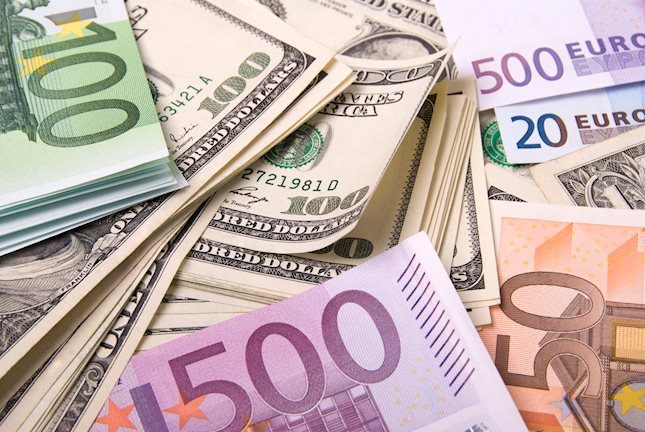In Europe, more fiscal policy packages have been announced by countries and existing packages been fortified. Spain unveiled a EUR117bn – 9% of GDP – package (with private investment set to add another EUR83bn), that includes EUR100bn of state guarantees and EUR17bn of direct aid to firms affected by the lockdown. In Germany, the government has continued to shy away from similar lockdown measures as in other European countries, but many self-employed and SMEs are already seeing their livelihoods endangered. Hence, the government is working on a EUR40-50bn ‘solidarity fund' that could provide direct funds to these SMEs that otherwise do not qualify for the liquidity measures provided through KfW. As the solidarity fund will be set up as a federal special fund that can borrow independently from the government, but benefits from the same federal credit rating (and hence cheap borrowing costs), it implicitly also means an end to Germany's long-enshrined balanced budget policy (‘black zero'). All in all, euro area countries have so far committed to fiscal and liquidity measures of some 3% of GDP in 2020 on average.
On Wednesday, the ECB held an emergency meeting to address the financial market fragmentation and massive spread widening (in particular led by Italian and Greek yields). The ECB decided to go ‘all in' with a Pandemic Emergency Purchase Programme (PEPP) with an overall envelope of EUR750bn, to be done in all asset classes under the APP. The EUR750bn will be implemented until end-2020 in a flexible manner. The EUR750bn comes on top of the normal APP and the EUR120bn envelope decided last week and regular QE. That means the ECB will buy around EUR111bn / month on average for the remainder of the year. Our takeaway is that the ECB has removed the credit risk and as such will help as the backstop. European government bonds reacted positively on the news in a sign of credibility of the forceful action. This bold package will enable governments to pursue a very expansionary fiscal policy.
Since the Fed went all in on Sunday, cutting its target range down to 0%, it has announced further programmes to inject liquidity into the financial market. The Fed has re-launched its Primary Deal Credit Facility (PDCF), Commercial Paper Funding Facility (CPFF) and Money Market Mutual Fund Liquidity Facility (MMMFLF).
With the US Congress close to approving the second emergency spending package, the negotiations on third are about to start. The Trump administration has proposed a package of up to USD1,200bn, consisting of emergency loans to businesses and direct payments to Americans. We think it is positive that Trump has thrown away the idea of tax cuts, as his new proposal is more acceptable for the Democrats.
The UK government has pledged GBP300bn in government-backed loans and guarantees to shield businesses from the coronavirus crisis. The BoE has cut its bank rate by an additional 15bp to 0.1%, which is a new low, and restarted its QE programme buying for an additional GBP200bn of UK bonds.
We have also seen new measures in the Nordic countries. In Denmark, we have seen new fiscal measures to support smaller companies and self-employed min particular. In Norway, Norges Bank has introduced a new F-loan with maturities up to 12 months and a rate cut of 75bp. Danmarks Nationalbank, Norges Bank and Sveriges Riksbank have established USD swap facilities with the Federal Reserve to manage the strained market situation for short-term borrowing in US dollars. Finally, after the strong sudden depreciation of the NOK, Norges Bank said it would be ready to intervene in the FX market to support the currency. Danmarks Nationalbank hiked its policy rate by 15bp due to the EUR/DKK being on the weak side of the parity level and recent outflow. For more, see Nordic Research: Policy measures in the Nordic countries, which we updated this morning.
On the regulatory side, banks have been granted forbearance to draw on capital and liquidity buffers in several countries. This pertains first and foremost to countercyclical capital buffer requirements that have been reduced to zero, but several countries are taking further measures, and within the banking union the ECB has also allowed for a temporary relaxation of, for example, the Pillar 2 Guidance and the Capital Conservation Buffer. At the time, several jurisdictions are allowing banks to draw on their liquidity buffers. Another hot topic is banks' provisioning for loan losses in the current situation. Recently implemented accounting rules (IFRS 9) imply a greater need for upfront provisioning as the economy sours, which is likely to weigh significantly on banks' capital levels in the coming quarters. Moreover, there are concerns are that by extending grace periods to certain clients, banks would be forced to classify loans as non-performing, thus requiring further provisioning. While last week's ECB/SSM statement highlighted the flexibility provided to supervisors in dealing with non-performing loans, we note media reports (e.g. Bloomberg and Global Capital) suggesting that measures to offer banks more leeway on provisioning are being discussed.
This publication has been prepared by Danske Bank for information purposes only. It is not an offer or solicitation of any offer to purchase or sell any financial instrument. Whilst reasonable care has been taken to ensure that its contents are not untrue or misleading, no representation is made as to its accuracy or completeness and no liability is accepted for any loss arising from reliance on it. Danske Bank, its affiliates or staff, may perform services for, solicit business from, hold long or short positions in, or otherwise be interested in the investments (including derivatives), of any issuer mentioned herein. Danske Bank's research analysts are not permitted to invest in securities under coverage in their research sector.
This publication is not intended for private customers in the UK or any person in the US. Danske Bank A/S is regulated by the FSA for the conduct of designated investment business in the UK and is a member of the London Stock Exchange.
Copyright () Danske Bank A/S. All rights reserved. This publication is protected by copyright and may not be reproduced in whole or in part without permission.
Recommended Content
Editors’ Picks

EUR/USD clings to daily gains near 1.0300 after US PMI data
EUR/USD trades in positive territory at around 1.0300 on Friday. The pair breathes a sigh of relief as the US Dollar rally stalls, even as markets stay cautious amid geopolitical risks and Trump's tariff plans. US ISM PMI improved to 49.3 in December, beating expectations.

GBP/USD holds around 1.2400 as the mood improves
GBP/USD preserves its recovery momentum and trades around 1.2400 in the American session on Friday. A broad pullback in the US Dollar allows the pair to find some respite after losing over 1% on Thursday. A better mood limits US Dollar gains.

Gold retreats below $2,650 in quiet end to the week
Gold shed some ground on Friday after rising more than 1% on Thursday. The benchmark 10-year US Treasury bond yield trimmed pre-opening losses and stands at around 4.57%, undermining demand for the bright metal. Market players await next week's first-tier data.

Stellar bulls aim for double-digit rally ahead
Stellar extends its gains, trading above $0.45 on Friday after rallying more than 32% this week. On-chain data indicates further rally as XLM’s Open Interest and Total Value Locked rise. Additionally, the technical outlook suggests a rally continuation projection of further 40% gains.

Week ahead – US NFP to test the markets, Eurozone CPI data also in focus
King Dollar flexes its muscles ahead of Friday’s NFP. Eurozone flash CPI numbers awaited as euro bleeds. Canada’s jobs data to impact bets of a January BoC cut. Australia’s CPI and Japan’s wages also on tap.

Best Forex Brokers with Low Spreads
VERIFIED Low spreads are crucial for reducing trading costs. Explore top Forex brokers offering competitive spreads and high leverage. Compare options for EUR/USD, GBP/USD, USD/JPY, and Gold.